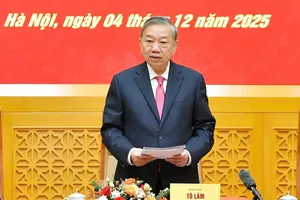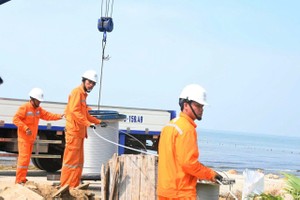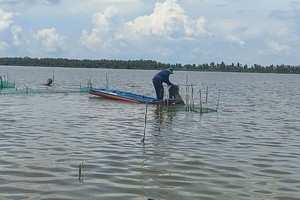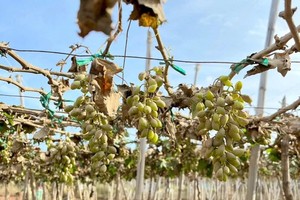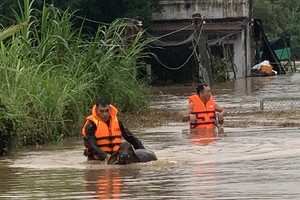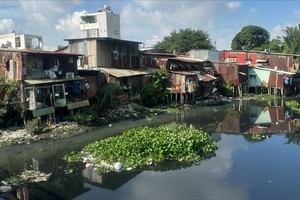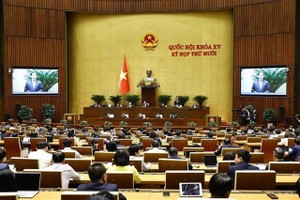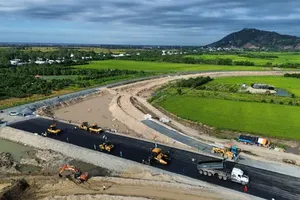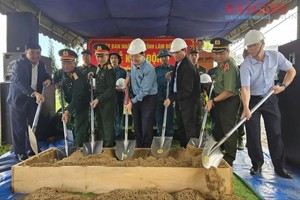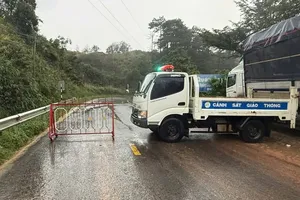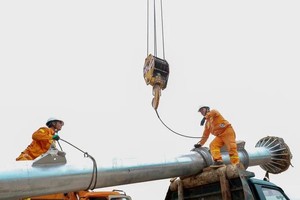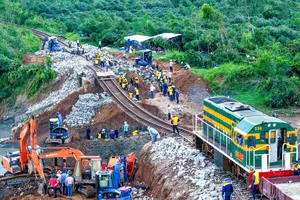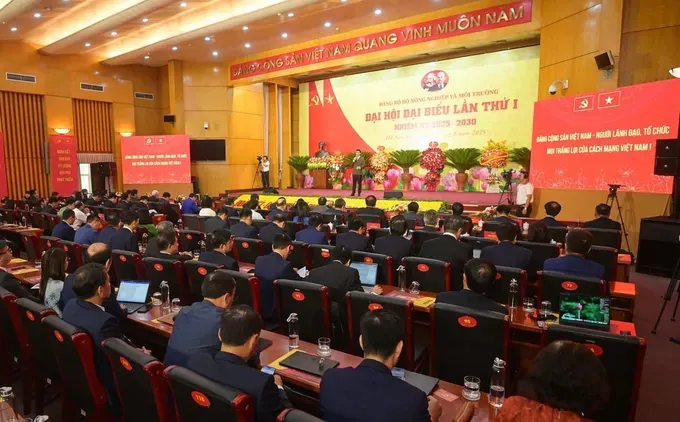
This congress is the first to take place following the merger of the Party Committees from the Ministry of Agriculture and Rural Development and the Ministry of Natural Resources and Environment. It signifies a new era for the agriculture and environment sectors, showcasing a strategic vision and a commitment to sustainable development.
In his inaugural address, Acting Minister of Agriculture and Environment Tran Duc Thang emphasized that the Party Committee of the Ministry of Agriculture and Environment will persist in fostering a spirit of unity, collaboration, and resolve.
He expressed their dedication to realizing comprehensive success in all objectives for the agricultural and environmental sectors by 2030, while aiming to be creative, innovative, and self-assured in the nation's new era of development.
The preliminary political report from the Party Committee of the Ministry of Agriculture and Environment, delivered at the congress by Deputy Minister Nguyen Hoang Hiep, outlines the sector's goals for 2030. It aims to develop a modern, high-productivity, and high-quality agricultural system that ranks among the top in Southeast Asia and within the top 15 globally; ensuring food security while sustaining export growth. Additionally, the sector will take proactive measures to adapt to climate change, lower emissions, prevent biodiversity loss, and transition towards a green economy.
Four groups of priority objectives
The congress identified four key target groups and strategic breakthroughs to realize the sector’s overarching goals such as institutions, science and technology, infrastructure, and highly skilled human resources.
Institutions act as the essential structure for tackling developmental 'bottlenecks' aiming to create modern and transparent governance, promote a green economy, and improve international integration.
Science, technology, and innovation are viewed as the primary catalysts, with total factor productivity (TFP) anticipated to account for more than 50 percent of growth by 2030.
Investment in infrastructure from agriculture and rural regions to environmental systems, disaster prevention, and irrigation is perceived as a proactive measure to safeguard livelihoods and improve the quality of development.
Cultivating high-quality human resources and drawing in talent are deemed essential for the sector to adjust to digital transformation, climate change, and global integration.
Innovative and breakthrough solutions
According to Deputy Minister of Agriculture and Environment Nguyen Hoang Hiep, the key task in the agricultural sector is to restructure the industry toward integrating multiple values, increasing added value, promoting deep processing, building modern logistics chains, encouraging entrepreneurship, and developing the rural economy in association with ecological environments and digital transformation.
Furthermore, the political report detailed various solutions, including the emphasis on removing the European Commission's 'yellow card,' enhancing quality management standards, advancing logistics and deep processing, encouraging the private sector, nurturing innovative startups, and creating new rural areas that are connected to urbanization and environmental conservation.
Regarding resource and environmental management, the upcoming term will witness significant reforms—ranging from land, water, and mineral regulations to environmental standards. Nature reserves and heritage sites will see expansion. Mechanisms for monitoring and evaluation will be enhanced. Most importantly, there will be a unified objective: ensuring that environmental preservation is not compromised for the sake of growth.
Revamping the Party building work
The Party Committee of the Ministry of Agriculture and Environment is focused on comprehensively developing the Party in terms of politics, ideology, and ethics. At the same time, it is strengthening the organization, enhancing leadership capacity, and combat effectiveness; intensifying inspection and supervision. The organizational structure is streamlined and effective. Following the merger, 22 new Party organizations were established, and the Party Committee and Inspection Committee were reinforced. The internal political protection work is being carried out rigorously, with thousands of cases evaluated and thousands of Party member cards issued. Many organizations and individuals have been recognized for their contributions.
During a directive speech at the congress, Deputy Prime Minister Tran Hong Ha praised the notable accomplishments of the agriculture, rural development, and natural resources and environment sectors from the last term. He emphasized that the Ministry of Agriculture and Environment is a substantial, multi-disciplinary entity that has united over 11,000 managers and scientists. This, he pointed out, constitutes an essential resource for achieving the ministry’s strategic goals.
The Deputy Prime Minister described the merger of the Ministry of Agriculture and Rural Development with the Ministry of Natural Resources and Environment as a decision of strategic foresight.
He emphasized that it reflects a development approach built on three pillars including economy, society, and environment. This unification, he noted, is not a simple administrative reshuffle but an organic integration aimed at maximizing strengths, eliminating overlap, and preventing resource waste.
